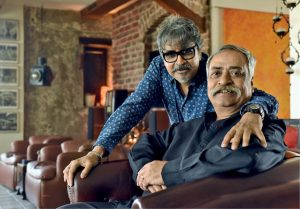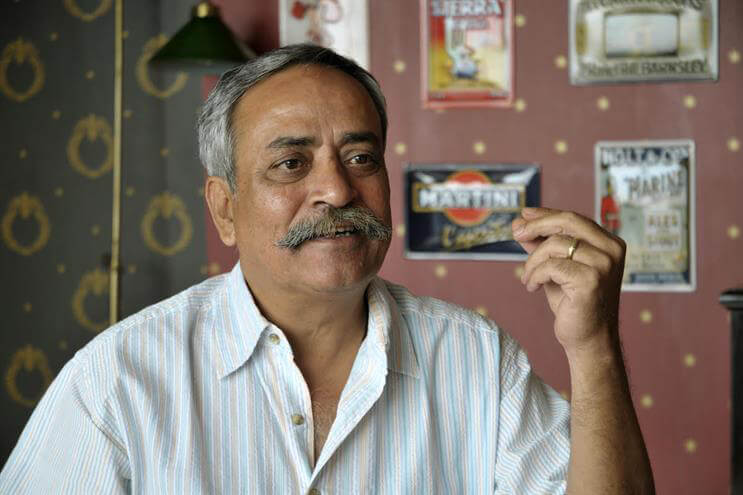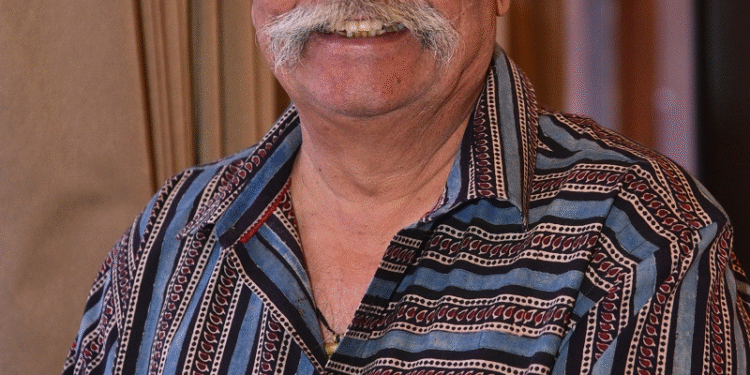Veteran advertising stalwart Piyush Pandey — the creative force behind India’s most memorable campaigns and often hailed as the ‘voice of Indian advertising’ — passed away at age 70 after a brief illness, leaving behind an unparalleled legacy in brand storytelling
Mumbai, 24 October 2025 – The Indian advertising world is in mourning as one of its most iconic figures, Piyush Pandey, passed away at the age of 70. Known for his extraordinary ability to tap into the cultural psyche of India and craft campaigns that resonated deeply, Pandey left an indelible mark on the industry and on the hearts of millions.
A Life in Brief
Born in 1955 in Jaipur, Rajasthan, Piyush Pandey’s career spanned over four decades, during which he rose from a junior client-servicing role to become the Executive Chairman of Ogilvy India and Global Chief Creative Officer. His tenure not only transformed his agency but also reshaped Indian advertising by putting culture, emotion and the Indian voice front and centre.
He was a recipient of the Padma Shri in 2016 and the LIA Legend Award in 2024 — recognition both of his craft and his influence.
The Creative Journey
Pandey joined Ogilvy India in 1982, originally in a client-servicing role, and soon moved into the creative department. His first major foray into advertising creativity marked a change in how brands communicated with India. Over time, the campaigns he led or wrote became part of the cultural lexicon — from perhaps the most-quoted tagline in Indian electoral history to everyday brand jingles.

Signature Work & Brand Campaigns
- The ad-campaign for Fevicol — a Bristol-shire-style, culturally rooted idea that became a classroom reference for ‘adhesion’ in more than one sense.
- The memorable “ठंडा मतलब कोका-कोला” (Cold means Coca-Cola) campaign.
- The tagline for Bajaj Super — “हमारा बजाज” (Our Bajaj) which became a rallying cry of mass-marketing for a generation of Indians.
- The widely discussed political slogan “Ab ki baar, Modi sarkar” often credited in media reports to him.
His style combined indigenous idioms, humour, simplicity and emotional connect — making high-impact campaigns look effortless. In effect, he gave Indian advertising its own voice, distinct from western-influenced norms.
Leadership & Influence
Beyond writing or conceiving campaigns, Pandey’s leadership at Ogilvy transformed the agency’s culture and output. Under his creative direction, Ogilvy India ranked as the No. 1 agency for multiple years in industry reckoners. His role was not just operational but symbolic — as one industry observer said: “There is a before-Pandey and after-Pandey era in Indian advertising.”
He also played an important role in nurturing new talent, encouraging creative thinking rooted in Indian context, and setting benchmarks for storytelling worldwide.
His Final Days & Passing
According to official media reports, Pandey passed away after a brief illness involving an infection. He was 70. Tributes poured in from across the industry and beyond — from advertising peers to business leaders and celebrities alike.

One heartfelt note came from Anand Mahindra, who described Pandey as not just a professional icon but a friend whose energy, laughter and zest for life were infectious.
Legacy & Impact
Pandey’s passing invites reflection on what he leaves behind — not just a catalogue of award-winning campaigns, but an altered landscape of Indian advertising.
Cultural Embedment
He always believed that adverts should speak the language of the people — not only linguistically but emotionally. Ads like those for Asian Paints (“हर घर कुछ कहता है”) resonated because they mirrored lived Indian experience.
Role Modeling for Creatives
For younger creatives in India and overseas, Pandey’s story became one of grounding global aspirations in local culture — proving that you don’t need a western template to succeed, you need authenticity, insight and craft.
Industry Structural Change
Under his stewardship, advertising agencies in India began to pay more attention to regional idioms, vernacular languages, local context and emotional storytelling. The business of brand communication became subtler, richer, more respectful of Indian diversity.
Most Influential Campaigns & Moments
Let’s delve deeper into some of the campaigns that defined his career:
- Fevicol – The famous idea of two buffaloes stuck together, or the bus full of folk dancers, captured attention not just for humour but for being deeply rooted in Indian imagery.
- Asian Paints – Har Ghar Kuch Kehta Hai – The notion that each home tells its story, each color choice has meaning — a departure from standard paint advertising.
- Cadbury – The Dancing Girl – The celebration of childhood joy, tapping into emotional equity rather than just taste.
- Bajaj Super – हमारा बजाज – Positioning a bicycle brand as symbolic of Indian journeys, hopes, aspirations.
The Man Behind the Ads
Beyond the accolades, Piyush Pandey was known for his affable personality, his zest for life, and his belief in simplicity. Stories from industry friends speak of his hearty laugh, his readiness to mentor, his insistence on ideas over ego.
What’s Next?
With his departure, how will the industry honour his legacy? A few likely trajectories:
- Awards or scholarships in his name for young Indian creatives.
- Retrospectives of his work in advertising festivals and institutes.
- A deeper push for Indian-voice advertising, inspired by his creative philosophy.
- Agencies revisiting their storytelling frameworks to honour the ‘Pandey way’ — culture-first, emotion-driven, rooted in India.
Wider Reflections
The passing of Pandey also raises broader reflections for the advertising and brand-communication world:
- How to balance commercial demands with cultural sensitivity and authenticity?
- How agencies in India can continue to build creative identity rather than mimic global templates?
- How to nurture talent that sees India not merely as a market but as a source of rich stories, context and meaning?
A Farewell, But Not an End
While the man may be gone, his ideas, his campaigns and his influence will linger. Every time a brand in India uses local taglines, regional storytelling or culturally rooted insight, the shadow of Pandey’s influence will be present.
In the words of one tribute: “He didn’t just write adverts, he rewrote how India told brand stories.”
Also Read : Baby anacondas, lizards and iguanas seized at Mumbai airport; Thane woman booked















 Categories
Categories









